Created by Sporcle
Check out their website for more fascinating quizzes
Follow them on Twitter @sporcle
Like O-Posts on Facebook
You can also follow O-Posts on Twitter @OPosts
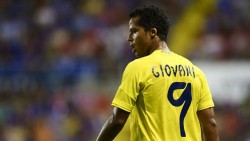

“We are committed to assembling the best roster that will compete for championships year in and year out,” were the words of the LA Galaxy president Chris Klein who last week saw Giovanni Dos Santos fill his team’s third designated player slot.
Currently side-lined with an abductor injury suffered whilst away with Mexico in the Gold Cup, Dos Santos is not due to make his debut for the Galaxy until August, but when he does he will join Robbie Keane and Steven Gerrard as Klein, together with head coach Bruce Arena, strives towards achieving his aim of repeated success.
“Giovani is a special player,” said Arena. “He has experience and success competing at the highest level and we believe he will only continue to develop. We are happy to add him to our roster and have confidence he can be an integral part of our success going forward.” Dos Santos undoubtedly possesses the talent to gratify Arena’s optimism and the 11 goals and 8 assists he managed in La Liga just two seasons ago suggests he will not look at of place alongside Keane and Gerrard.
Of course, that is if he produces the form he is widely known to be capable of on a regular basis. Too often Dos Santos has been the underwhelming anti-climactic winger who followed up that excellent year for Villarreal with just one goal and three assists from 27 games last season.
From being named the world’s 5th most exciting player by World Soccer Magazine after breaking into the Barcelona senior team in 2007 to make his debut aged 18, now to the MLS via loan spells at Galatasaray and Ipswich Town, Dos Santos has failed to settle in anywhere since switching to Spurs in 2008 and his talent has suffered for it.
Despite enjoying a successful career with Mexico since making his debut 8 years ago, his club career has simply failed to replicate the same success that won him the Gold Cups of 2009 and 2011 with his country, as well as the Olympics with the under 23s in 2012.
He is the holder of 90 caps for El Tri and scorer of the goals that beat USA in the final of the 2011 Gold Cup and threatened to dump Holland out of last year’s World Cup in the last-16 stage. Veteran of two World Cups and runner-up for the Young Player of the Tournament award in South Africa in 2010, Dos Santos’s tales of his time with the national team will be full of fulfilment and content. At club level however the 26 year old just hasn’t managed to find his way since being billed as the “new Ronaldinho.”
Maybe the sizeable task of living up to that name of having the tag of being a graduate from Barcelona’s famed La Masia academy is the main factor behind the Mexican’s failure to realise his true potential at club level, or rather it could be the misfortunate timing with his managers.
Frank Rijkaard, who integrated Dos Santos into Barca’s senior team as a teenager in 2007/08, a season that ended with a hat-trick in the 5-3 win over Real Murcia, was that summer replaced by Pep Guardiola who immediately sold the winger to Tottenham.
Juande Ramos was the Spurs coach who brought Dos Santos to White Hart Lane and by that October he was fired and in came Harry Redknapp who the Mexican said stymied his progress in London. “It was very frustrating for me because, like every footballer, I just wanted to play. I’d prepare for a game every three days, then not play.”
Dos Santos started just 11 games for Spurs, mainly in the cups as he failed to make a single start in league competition, and four years later, after unsuccessful loans to Ipswich, Galatasaray and Racing Santander, he signed for Mallorca. Despite relegation he finished top scorer with six goals and racked up seven assists, attracting newly promoted Villarreal.
His first season with the Yellow Submarine on top of his year with Mallorca hinted at a resurgence in form but his second year, spent with his brother Jonathon after he followed suit by moving from Barcelona, duly stamped that. Now, La Galaxy have offered Dos Santos the chance to turn his career around in the Americas.
Galaxy have chased Dos Santos for the past four years but have previously been restricted by the MLS guidelines that limit teams to three designated players. A change in the rules this summer allowed a down payment to be made on the contract of Omar Gonzalez, which then freed up one of the DP spots for Dos Santos.
The Mexican will add pace, flashy technique and the benefit, unlike Keane and Gerrard, of having yet to reach the peak of his talents at 26. It is also hoped that his arrival will gain the team more followers from southern California’s Mexican American community, in which it currently enjoys little presence.
“He has the individual flair that sometimes we lack in the final third of the field,” Arena said. “His running off the ball’s good. He can go by people. He has an excellent first touch. He’s a finisher. He can pass. “He’s got all those great little qualities in and around the penalty area.”
They are qualities apparent to many familiar with Dos Santos since he broke onto the scene with Barcelona. Now he is back in the west, he has a great chance to deliver consistently on the vast billing he has never quite realised.
Written by Adam Gray
Follow Adam on Twitter @AdamGray1250
Like O-Posts on Facebook
You can also follow O-Posts on Twitter @OPosts

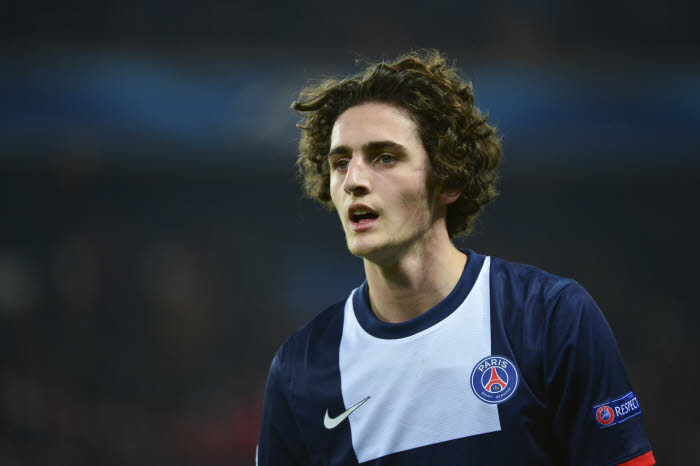
It isn’t really news that Adrien Rabiot is unhappy — with his role — at PSG. The talented youngster has once again demanded to leave the club and his mother and agent was supposed to meet the PSG president to request a move away from the club.
Tottenham have been on his tail for a while now and have been severely linked with the Frenchman in the last two windows. Recent reports say they have reignited their interest in the player. West Ham are also said to be keen on the player.
Even though there isn’t any real indication as to whether Tottenham or West Ham are genuinely interested in the player, it is definitely clear that Rabiot doesn’t want to stay at PSG. The 20-year-old midfielder feels he needs to be play more and it is understandable for him to want to move to a place where he gets more game time, especially if he wants to be chosen for the senior France side for the upcoming Euros.
Spurs need a central midfielder, someone who can command the midfield and do so with conviction and in Rabiot, they will get exactly that.
The Frenchman started his career playing in the suburbs of Paris for US Creteil Lusitanos before Manchester City came offering him a place in their academy. Then 13 year old, Rabiot struggled with life at city as he faced big problems due to the language barrier.
Just six months hence, he decided to leave England and move back to his native France. His boyhood club, PSG came asking for his services and the youngster joined the Parisian giants, quickly making his way up the ranks.
Rabiot is capable of playing anywhere in the midfield, from the holding role to a more box to box attacking role. He has usually been deployed in a deeper role for PSG and has proved his worth. He doesn’t shield the defence and at the same time he doesn’t bombard forward regularly to try and get to the final third. Instead, he sits in the centre and starts plays from the heart of the pitch, to try and orchestrate things from the centre.
His biggest strength has to be his positioning. He is not caught out of position and even if he is, he is quick enough to track back. He is not the bulkiest of players so instead of using his physicality, he uses his vision to help his side. He can thread neat through balls and passes to his teammates and move the play forward.
With competition from the likes Marco Verratti among others for a place in PSG’s midfield, it is understandable why Blanc hasn’t given him the game time he thinks he deserves. He started 10 league games last season and came off the bench in 11. He scored four goals and got an assist to his name last season. With a lack of starts and goal scoring not being his main priority, these stats can show a glimpse of how talented the midfielder is.
Tottenham and West Ham can definitely use a player like him even though he’s not yet the finished article and may take a while for him to get going, if either of the Premier League clubs lands him, they will have a great player for the future within their ranks.
Written by Aakriti Mehrotra
Follow Aakriti on Twitter @Aakriti1
Like O-Posts on Facebook
You can also follow O-Posts on Twitter @OPosts
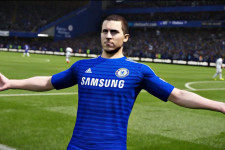
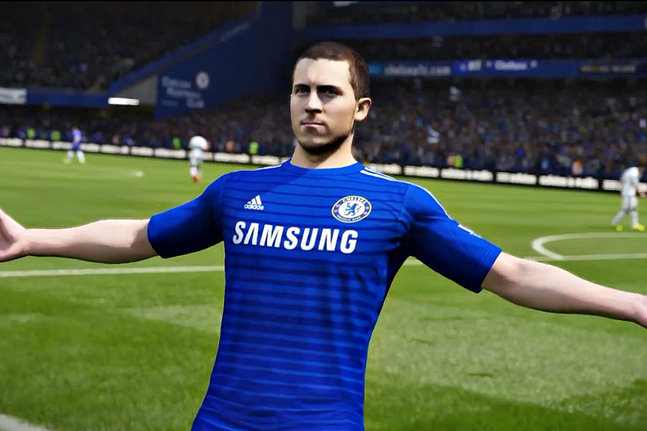
HEADS UP: The list is in ascending order.
Are you looking for a young but powerful player to add to your team? If so, then we have a list of the ten highest rated young players (under the age of 25) for you to choose from.
David Alaba – Bayern Munich
Overall Rating: 84
Best attribute: 87 rating in Pace
Alaba is just 23, but has managed to become one of the best in his position in the world. The left back has won almost everything with Bayern Munich. He progressed a lot last year, which is reflected in FIFA 16 as he is rated 84.
Christian Eriksen - Tottenham
Overall Rating: 84
Best attribute: 88 rating in Passing
Eriksen is one of the best ball passers in FIFA 16. With 9 assists, he was one of the most influential player in Spurs’ squad last year. The Dane, also aged 23, has a potential of 87, which makes him the best Tottenham player in FIFA 16.
Antoine Griezmann - Atlético Madrid
Overall Rating: 84
Best attribute: 87 rating in Pace and Dribbling
Griezmann was one of the finest midfielders in La Liga last season. He scored more than 20 goals and assisted a ton. He has awesome stats in Dribbling and Pace making him suitable for a fast game play.
Isco – Real Madrid
Overall Rating: 85
Best attribute: 89 rating in Dribbling
The Real Madrid midfielder was brilliant for the Los Blancos when their top midfielders were out injured. He played an outstanding role to cover up their void that he could possible grab a starting role next season. His performance has also increased his FIFA stats from 83 to 85.
Paul Pogba - Juventus
Overall Rating: 86
Best attribute: 89 rating in Physical
Pogba is probably one of few bright midfielders who of which we are sure that they will grow into a great player. His constant improvement each season has seen him become close to among the best in the game. In his FIFA career however, he has almost doubled his stats having started at 47 in FIFA 11.
Mario Gotze – Bayern Munich
Overall Rating: 86
Best attribute: 91 rating in Dribbling
Gotze has always been lucky. He scored the last minute World Cup final goal, he moved to Bayern Munich in just the right time to win the treble, and he has an almost constant rating in FIFA series for three years. With 91 rating in Dribbling, the German midfielder is among one of the most expensive in FUT 16.
James Rodriguez – Real Madrid
Overall Rating: 87
Best attribute: 86 rating in Passing and Dribbling
After his brilliant World Cup performance, EA sports increased his 85 rating to 88 in FIFA 15. In the latest version he has an 87 rating because he was out injured most of the season. He however has a lot more potential than he had in FIFA 15.
Thibaut Courtois – Chelsea
Overall Rating: 87
Best attribute: 90 rating in Reflexes
The Chelsea goal stopper has managed to kick Cech out of the club because of his game changing goalkeeping. He helped his side win the Premier League this season making him one of the best players in the Premier League last season. His FIFA stats has boosted from 84 to 87 with a potential rating of 89.
Neymar - Barcelona
Overall Rating: 89
Best attribute: 93 rating in Dribbling
The former Santos’ attacker won the treble with Barcelona this year. He was very influential as he managed to score more than 20 goals. He will be one of the best attackers in FIFA 16 who is going to be sold probably hundreds of thousands of times.
Eden Hazard - Chelsea
Overall Rating: 89
Best attribute: 94 rating in Dribbling
Finally, the best young player in FIFA 16 is Eden Hazard. The Chelsea winger was at his absolute best last year for the Blues winning the Premier League and Capital One Cup. His FIFA stats has boosted from 86 to 89 making him one of the best in the game. Because he is young and dynamic, he will likely be the most sold player in FUT 16.
Written by Charchit Dahal
Follow Charchit on Twitter @CharchitDahal
Like O-Posts on Facebook
You can also follow O-Posts on Twitter @OPosts

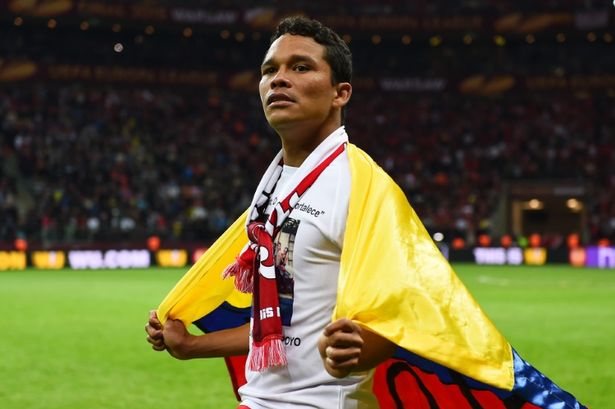
AC Milan announced last month that they have reached an agreement to sign Sevilla striker Carlos Bacca, subject to a medical.
The Italian giants met the buyout clause in his contract that is reported to be set at €30 million.
Let’s take a closer look at the 28-year-old Colombian.
Background
What can he offer AC Milan?
The Rossoneri’s physical presence up front has been lacking, probably ever since the departure Mario Balotelli last summer. The defences in Serie A had nothing to be frightened of - apart from Jeremy Menez who managed to bag 16 league goals.
Bacca has a robust nature about him, an element AC Milan certainly missed last year. A key strength is his movement, his ability to draw defenders then exploit the space in behind has become one of his signature moves.
Adept at leading the line, or dropping deep to receive the ball before driving deep into the heart of enemy territory, Bacca keeps defences on their toes for the full 90 minutes.
AC Milan didn’t splash the cash just for his work rate, the Colombian should offer plenty of goals to Sinisa Mihajlovic’s men too.
Bacca scored his 20 goals from just 59 shots last season, meaning he maintained a conversion rate of nearly 34% - scoring with more than one in every three shots. That rate was the best of all attackers in La Liga last season – significantly better than Ronaldo, Messi and Neymar.
With this work rate and intelligence along with a deadly eye for goal, he is certainly a striker to be feared and could be an instant hit in Serie A.
Written by Serie A Writer
Follow Serie A Writer on Twitter @SerieAWriter
Read more of Serie A Writer’s articles at www.voicingcalcio.com
Like O-Posts on Facebook
You can follow O-Posts on Twitter @OPosts
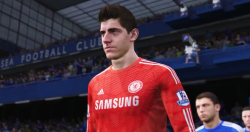
The FIFA season has started and this is the time for you to boost your team. It doesn’t matter if you are playing career mode or FUT 16, your team needs a good goalkeeper.
We have made it easy for you as we have here a list of the top 10 goalkeepers in FIFA 16.
1. Manuel Neuer
Overall Rating: 90
Best attribute: 92 rating in Kicking
The World Cup winner and Ballon d’Or nominee is definitely the best keeper in FIFA 16. Neuer has pulled up some insane saves this year which has resulted in his rating boost to 90 from 88.
2. David De Gea
Overall Rating: 86
Best attribute: 89 rating in Reflexes
De Gea has been Manchester United’s best player this season, so no wonder Real Madrid desperately want him. We have seen his rating boost from 83 to 86 as he holds insane stats for reflexes and kicking.
3. Thibaut Courtois
Overall Rating: 86
Best attribute: 90 rating in Reflexes
The Chelsea custodian is definitely one of the best in England. Courtois can develop into the world’s best if he continues to perform this well again next season. He is probably going to be the most bought player in the FUT 16.
4. Claudio Bravo
Overall Rating: 85
Best attribute: 88 in Reflexes
Bravo won the treble with Barcelona and Copa America with Chile making him the most successful goalkeeper this year. All this success has helped his FIFA 16 stats as he is boosted to 85 from 81.
5. Gianluigi Buffon
Overall Rating: 85
Best attribute: 88 rating in Diving
The Juventus legend is certainly ageing, but that does not stop him from being at his absolute best. He is definitely going to be popular among Italian FIFA players.
6. Hugo Lloris
Overall Rating: 84
Best attribute: 87 rating in Positioning
Hugo Lloris is one of the most consistent goalkeepers playing in the Premier League. The French goalstopper has the same rating he had in the previous version of the game.
7. Joe Hart
Overall Rating: 84
Best attribute: 84 rating in Kicking
Manchester City and England goalkeeper Joe Hart had a pretty successful season despite his team’s underwhelming performances. He made some game changing saves, which helped secure a Champions League spot for his club. He is already popular among English gamers.
8. Petr Cech
Overall Rating: 84
Best attribute: 83 in Reflexes and Handling
The former Chelsea man still has a lot of top class goalkeeping left in him. And, this is the reason why Arsenal signed Cech. He is going to be famous with fans of both London clubs in FIFA 16 (more likely among Arsenal supporters) as he remains one of the best goalkeepers in England.
9. Diego Lopez
Overall Rating: 83
Best attribute: 88 rating in Handling
The AC Milan goalkeeper has been very profound for his club this season. He has been able to save plenty, including in one on one situations, which is why his stats in FIFA 16 have been boosted.
10. Roman Weidenfeller
Overall Rating: 83
Best attribute: 85 rating in Positioning
Weidenfeller has been one of the most consistent goalkeepers for Dortmund. With game saving reflexes, which was vital for his club in the latter phase of the season, the Germany international definitely makes it into our top 10 list.
Written by Charchit Dahal
Follow Charchit on Twitter @CharchitDahal
Like O-Posts on Facebook
You can also follow O-Posts on Twitter @OPosts

At 14, Tobias Svendsen had to get permission by the Norwegian FA to appear in a third tier game for Molde’s reserve team. Just a year later, he got his debut for the reigning champions in the cup.
The now 15-year-old midfielder is living in the shadow of his 17-year-old brother Sander Svendsen who has established himself in the first team, but Tobias is following not far behind.
QUICK FACTS:
Name: Tobias Svendsen
Date of birth: 31.08.2024 – Age: 15
Position: Midfielder
Club: Molde FK
Key strengths
His low centre of gravity, exquisite first touch, great understanding of the game and quick feet perfectly fits the bill for a modern central midfielder. He is very capable in small spaces, extremely difficult to get the ball off and is considered to be an aggressive midfielder with decent tackling abilities in defensive positions.
Molde manager Tor Ole Skullerud has on multiple occasions praised Tobias but he is keen to point out that they will not rush his development, especially as he is so young and has more physical growth to do.
“He has all the attributes to become a first team regular here at Molde. He is far ahead of his age in every way. It is still impossible to predict how far he will reach. Tobias has great potential but first he must get peace and quiet to develop,” Skullerud said to Norwegian press.
Stats
After Svendsen appeared in the 4-2 win against Rosenborg 2 at the third tier of Norwegian football over a year ago, he got a few appearances during the first team’s pre-season last winter. Then back in April 2015 he was handed his debut for the first team in the first round of the cup, a match Molde in the end won 2-0.
Considered an exceptional talent Svendsen was scouted at the age of 11 by Ajax. In fact, it was the younger of the Svendsen brothers that got the pair on the Dutch club’s radar when he was just 11, which two years later lead to his first of many trips to Amsterdam to train with the club.
For the time being Tobias is only thinking about becoming a better footballer, despite interest from Ajax. Claiming he is ‘too young’ to go professional abroad, Tobias told Norwegian press that it would be difficult to turn down an offer from Ajax ‘in a couple of years’.
“I have been abroad and seen how professional everything is, so yes, it is really tempting. I am too young to do that now, but of course it is a dream. If I receive an offer when I am 17 I would probably accept,” he said.
Written by Lars H. Thomesen
Follow Lars on Twitter @LarsHT
Like O-Posts on Facebook
You can also follow O-Posts on Twitter @OPosts
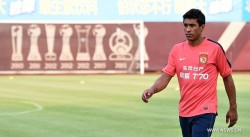
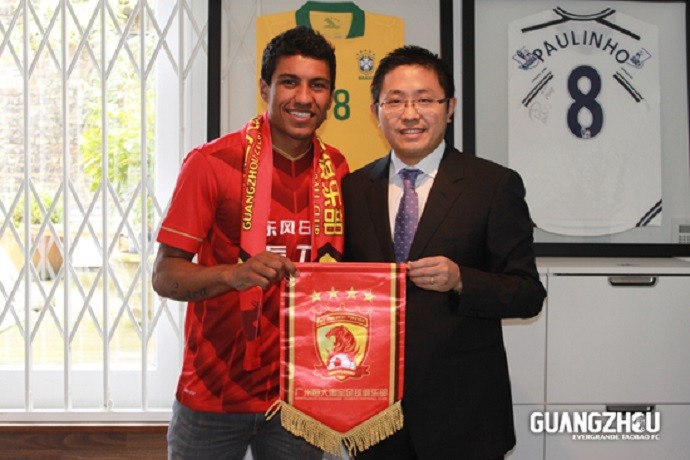
In the summer of 2013, Tottenham thought they had made a bargain by signing Paulinho from Corinthians for a fee of £17 million. Two years on, some might say Spurs were lucky to recover £9.8 million from what turned out to be a disastrous transfer.
In late June Paulinho signed for Chinese club Guangzhou Evergrande, a club managed by fellow Brazilian Luis Felipe Scolari – a manager that included him in the Brazilian squad for the 2013 Confederations Cup.
Club-record fee
The Brazilian’s fee was a club-record transfer at the time, since beaten by the signing of Erik Lamela, but the midfielder struggled to find his place in a hit-and-miss Tottenham team.
As an all-round midfielder with an eye for goal and decent tackling abilities, expectations were high as he was handed his debut.
In his first couple of months at White Hart Lane, Paulinho did in fact deliver some of what was expected of him.
Out in the cold
Despite the good start he later he hit a slump of form in which he never recovered from, especially not after Andre Villas-Boas - the manager who brought him to the club – was sacked in December 2013.
As Tim Sherwood took charge of the club, Paulinho was already out in the cold. The 26-year-old never managed to convince Sherwood he should be given a chance to cement his place in the team, which again was the story under Mauricio Pochettino last season.
Over the two years in North London Paulinho got 10 goals and 67 appearances to his name, 20 of which were as a substitute.
Last season, he only started three Premier League games under Pochettino. His confidence was clearly gone and as it turns out, so was he.
Return to form in China?
Few players have successfully transferred from the English Premier League to China, Didier Drogba and Nicolas Anelka being the most obvious and recent examples. However the move might be a perfect one for Paulinho to find his feet again.
The focus on his failure at Spurs will disappear, so will the intense pressure for English media constantly reminding him of his big price tag at Tottenham.
At Guangzhou, he will start fresh under a manager who knows him well. He will be able to focus on what he does best, what he did at Corinthians but never managed to do at Tottenham – play good football.
There is no doubt the talent is there, it simply seems as if the Premier League wasn’t the right league for him to blossom and continue his development.
Having said that, we should not be surprised if he transfers back to Europe within a couple of years – however probably not to the Premier League.
Written by Lars H. Thomesen
Follow Lars on Twitter @LarsHT
Like O-Posts on Facebook
You can also follow O-Posts on Twitter @OPosts

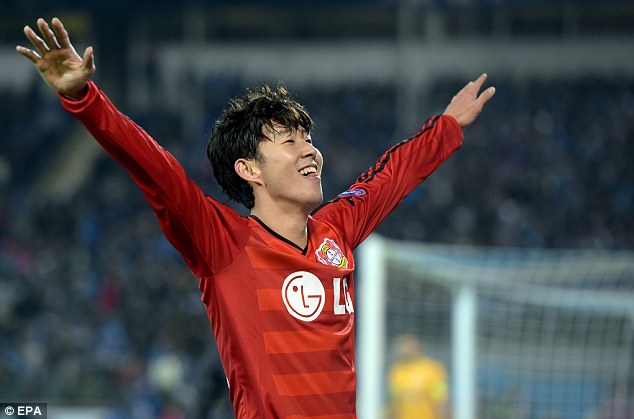
Throughout the spring there have been rumours about Son Heung-Min moving to Anfield, and there are plenty of European clubs keeping a close eye on Son this summer.
The twenty-three year old had a phenomenal season for Bayer Leverkusen scoring eleven goals in the Bundesliga, and seventeen in total, as he helped Leverkusen finish fourth in the league, putting them into the qualifying rounds of the Champions’ League.
Son’s performances this season led to FourFourTwo magazine declaring him Asia’s number one footballer. Son Heung-Min started his career at Hamburg, having joined them at the age of sixteen. He played for Hamburg for three seasons, scoring twenty goals in that time, with his 12 goals in the 2012-3 season attracting the attention of Bayer Leverkusen who shelled out a reported 10 million Euros to sign the South Korean.
He has been impressive in his two seasons at the club, with his hat-trick against Wolfsburg this February being a particular highlight. Two things stand in the way of him moving to another club. The first one is that he already is in the starting line-up of a Champions League club (assuming that Bayer Leverkusen get through the qualifying play-off).
Many of the clubs interested in Son are either not in the Champions League (like Liverpool) or may not be able to offer him a place in the starting line-up.
Despite dreaming of playing in the English Premier League, Son Heung-Min will be wise to remember the fate of Shinji Kagawa at Manchester United, and Andre Schurrle, the man who Son Heung-Min was signed by Leverkusen to replace, at Chelsea. Both players have returned to the Bundesliga after being under-appreciated in England.
Another stumbling block to any move is the matter of Son’s military service. All South Koreans are required to undertake military service, and although most of the South Korean national team earned an exemption from military duty by either winning a gold medal at the 2014 Asian Games or a bronze medal at the London Olympics, they managed these two feats without Son Heung-Min who turned down the chance to play in London 2012, and was refused leave by Leverkusen for the Asian Games.
As a result of this, the prospect of two years playing in the military team (currently in South Korea’s second tier) threatens to derail Son’s career and is certainly a consideration for any teams considering making a bid for South Korea’s latest superstar.
Written by Steven Price
Check out more of his work on everything South Korean football at the excellent K-League Footy
Follow his website on Twitter @Kleaguefootball
Like O-Posts on Facebook
You can also follow O-Posts on Twitter @OPosts